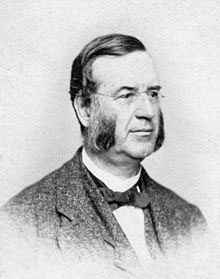
I need not say that to withhold drugs in the treatment of disease is as important an exercise of professional judgment as to employ them. Nothing is easier that to prescribe drugs. On the other hand, to refrain from their use may require not a little firmness and independence. An ignorant or weak practitioner therefore may be tempted to pursue a medical treatment in opposition to his judgment or to cover up his lack of knowledge.
– Austin Flint, 1886, cit. by Paul Berman, MD
Austin Flint (1812–1886) was an eminent American physician who made important contributions to the practice of medicine and to the knowledge of diseases of the heart and lungs. Graduating from Harvard University in 1832, he spent several years in private practice, then served as professor of medicine at the Buffalo School of Medicine, Rush Medical College in Chicago (1844–5), New Orleans Medical School and Charity Hospital, University of Louisville, Bellevue Hospital, and Long Island Hospital in Brooklyn. Recognized as a leader in the field of medical education and thought, he served as president of the American Medical Association and the New York Academy of Science.
He was a meticulous clinician and researcher, publishing over 240 articles, keeping careful records of hundreds of clinical cases, practicing and advocating percussion and auscultation, and describing several cardiac and pulmonary physical signs. He popularized the use of the binaural stethoscope and of the thermometer, and attempted to understand the nature and spread of several infectious diseases, including typhoid fever and typhus. His widely popular Treatise on the Principles and Practice of Medicine (1866) went through six editions in his lifetime. He is remembered nowadays for his description of an apical diastolic murmur originating from the mitral valve in cases of aortic regurgitation:
In some cases in which free aortic regurgitation exists, the left ventricle becoming filled with blood before the auricles contract, the mitral curtains are floated out and the valve closed when the mitral current takes place, an, under the circumstance, this murmur may be produced by the current just named, although no mitral lesion exists.
Reference
Berman, P. 1988. “Austin Flint—Americas’ Laennec revisited.” Arch Intern Med 148: 2053–2058.
GEORGE DUNEA, MD, Editor-in-Chief
Highlighted in Frontispiece Volume 5, Issue 2 – Spring 2013, and Volume 4, Issue 3 – Summer 2012

Leave a Reply